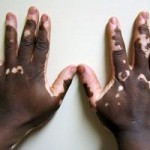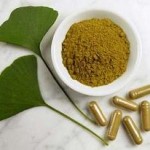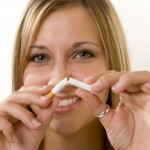 The skin without moisture is a very common disorder that arises because the skin has lost its ability to retain enough water, posing a scaly appearance and loses its main feature: the elasticity. Recommendations to recover the freshness.
The skin without moisture is a very common disorder that arises because the skin has lost its ability to retain enough water, posing a scaly appearance and loses its main feature: the elasticity. Recommendations to recover the freshness.
Process is a little known but very common: the “skin xerosis” or dry-looking skin. Factors that can facilitate the emergence of this disorder, including genetic inheritance.
There are also situations that may trigger or anticipate the arrival of dermatological conditions such as skin aging, disease or taking concomitant medications that affect the composition and function of the skin.
Among the triggers, which themselves can cause dry skin, given certain environmental conditions and some chemical and physical agents.
However, “there is no clear definition for dry skin, as can also be seen in healthy people, because the scheme of life, environment or work activities,” says dermatologist Agustin Alomar, coordinator of the Advisory Group Xerosis Cutaneous experts.
This group of experts has produced a guide to prevent and alleviate xerosis, which reviews the latest research on the factors influencing dry and sensitive skin, and the best strategies for daily skin care.
One disease
Skin that may present with dry skin is xerosis winter, as cold weather and humidity decrease that occurs during the winter are associated with reduced skin hydration.
Lack of moisture: Caution.
Other conditions associated with dry skin are older skin, which affects at least 75 percent of those over 75 years and is the most common cause of pruritus without skin lesions showy, and ichthyosis: the extremely dry skin can lead to squamous hereditary disease.
Also associated with various types of dermatitis Xerosis:
The atopic, which is a chronic skin inflammation that evolves by outbreaks, and usually occurs during the first year of life)
Hands, which is caused by prolong and repeated exposure to irritants such as detergents and soaps.
Plant, which is one that especially affects young people, producing dry, scaly, lesions, cracks, thickening of the skin and itching.
Maintain a healthy lifestyle, eating a balanced and varied diet, regular exercise, rest 6-8 hours daily and use daily hygiene soaps with moisturizers and acidic pH are some tips to give your skin proper care.
They must also purchased certain cosmetics and hygiene habits, such as showering with warm water, avoid rubbing the skin dry with sponges or mitts or use specific soaps that are not irritating.
Most of the preparations for the treatment of dry skin emollients or humectants are known and are presented in the form of O/A or A/O as the degree of dehydration presents the skin.



